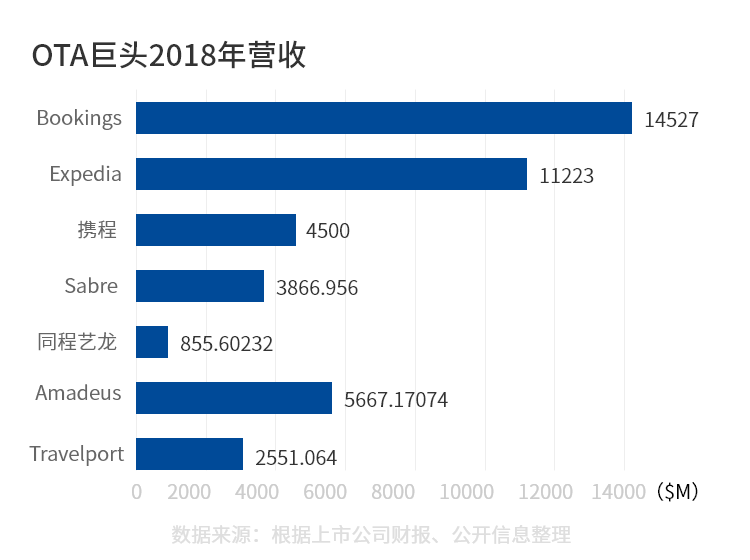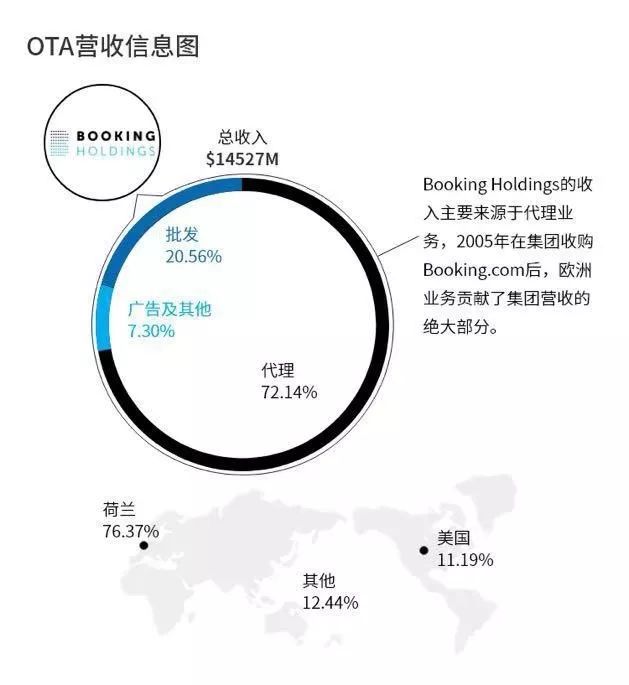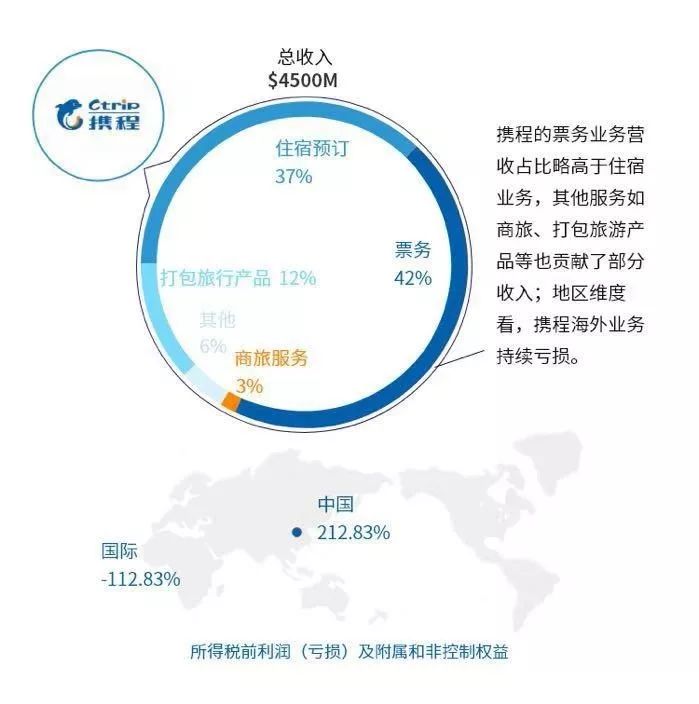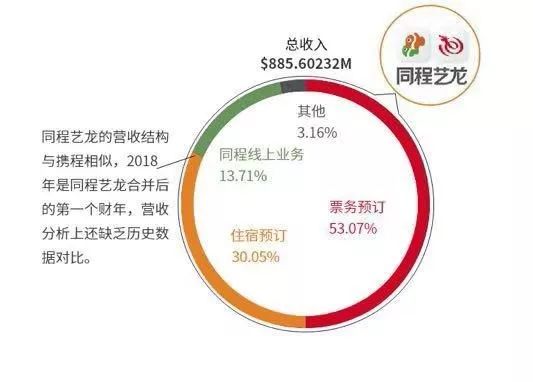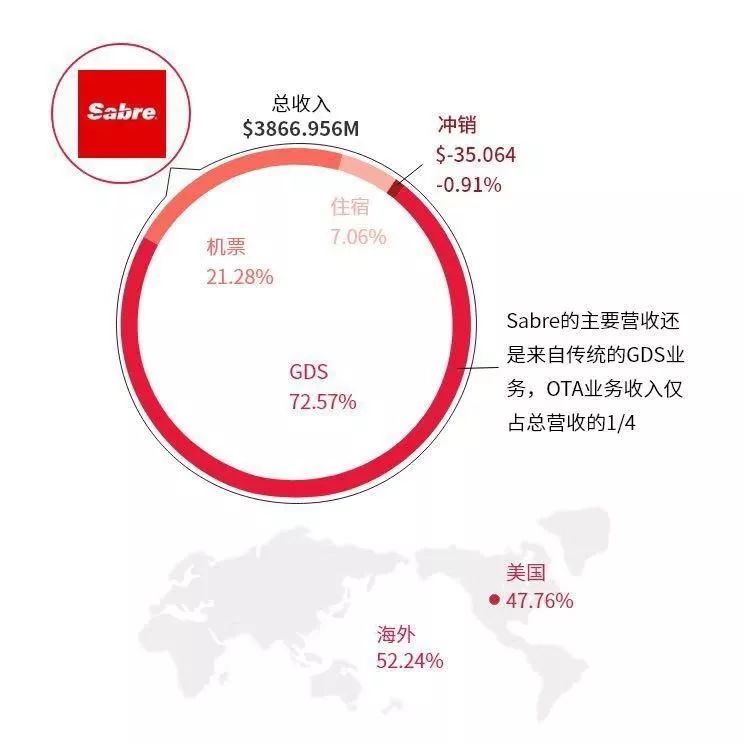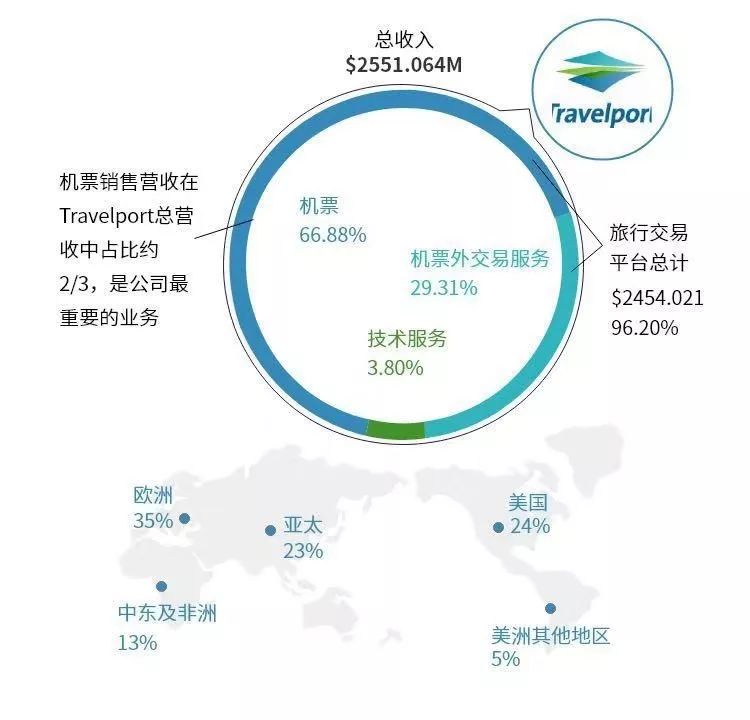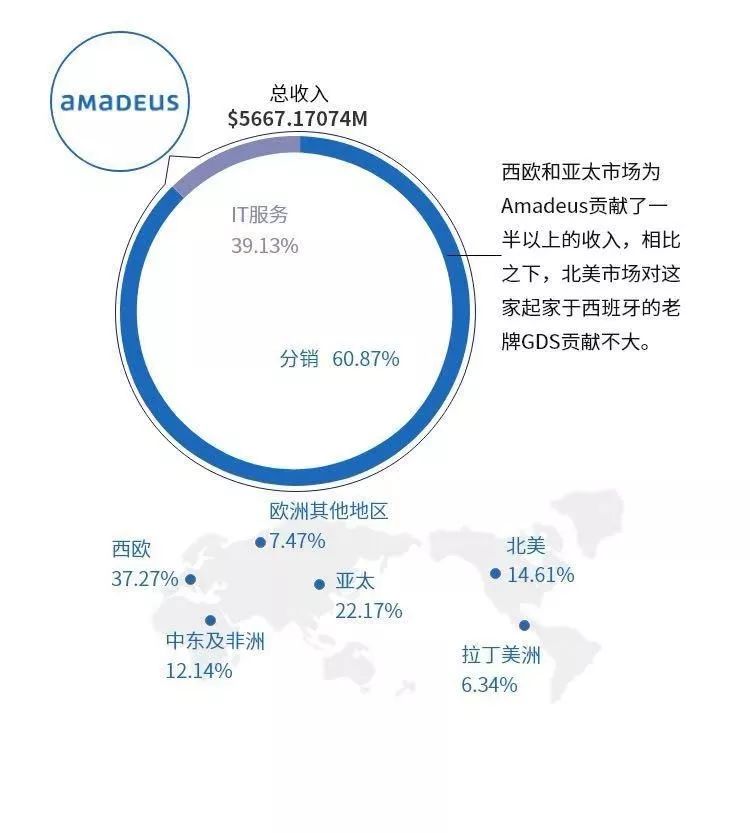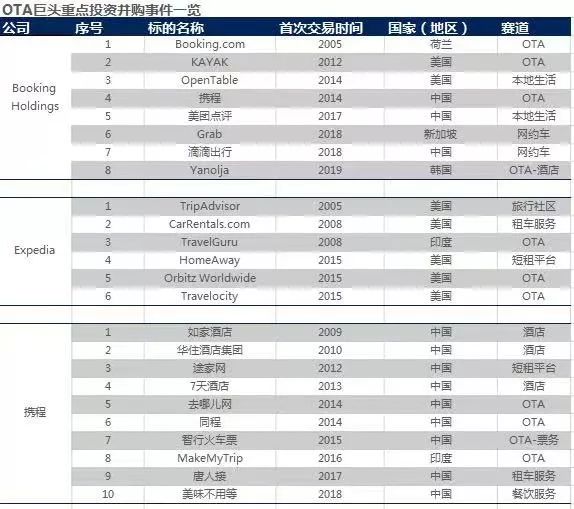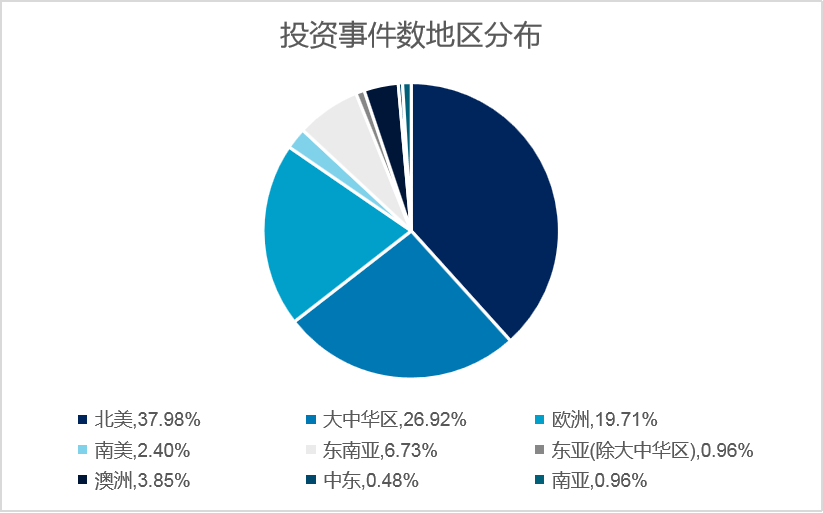The civil aviation and hotel industry customers contributed most of the revenue of the OTA industry, but in recent years, with the reduction of the commission rate of mainstream European and American airlines, each OTA relies more on the income from accommodation providers.
Editor’s note: This article is from WeChat public account “Beyond J Curve” (ID: beyonddthejcurve) , author Yao Wei Yuan Jiachang.
In this issue, we have sorted out the investment and financing situation of OTA industry giants from the listed company’s financial report and investment mergers and acquisitions, and from industry development history, listed company revenue >, Investment in the target track segment cloth and national distribution four dimensions show the corner of the OTA rivers and lakes.
Core discovery:
-
GDS companies that were born in the previous era have entered the OTA, and technological changes have promoted the transformation of the trading industry.
-
The concentration of OTA industry is rising, and Overseas Booking Holdings is firmly in the leading position, followed by Expedia; the domestic BAT battle continues – Ctrip is backed by Baidu, and its market share advantage is obvious; Meituan and Tongcheng Yilong In the Tencent squat; Feizhu Alibaba Group, the strength has increased significantly in recent years.
-
OTA industry profit model – agent + wholesale + advertising fee. Booking Holdings is dominated by a proxy model, and Expedia relies heavily on wholesale models. (Agent mode means that the platform extracts a certain percentage of commission from the B-end revenue. The wholesale model means that the OTA company sells products from the B-end at a lower price, and then sells on the platform to increase the price.)
-
Civil industry and hospitality customers contributed most of the revenue of the OTA industry, but in recent years, with the European and American mainstream airline commission rate reduction, each OTA is more Rely on income from accommodation providers;
-
Compared with the last-time network car giant, OTA industry leading companies around the core business trackThe trend is more obvious – such as insurance, payment, social, portal-related travel-related services, OTA platform provider car rental/network car track, hotel/homestay industry It is the focus of OTA companies. CVSource’s investment data shows that since 2000, eight OTA giants have publicly disclosed over 208 cases investment mergers and acquisitions, and only the investment mergers and acquisitions in OTA and GDS tracks have reached < Strong>91.
First, industry history review: technology detonation mode change
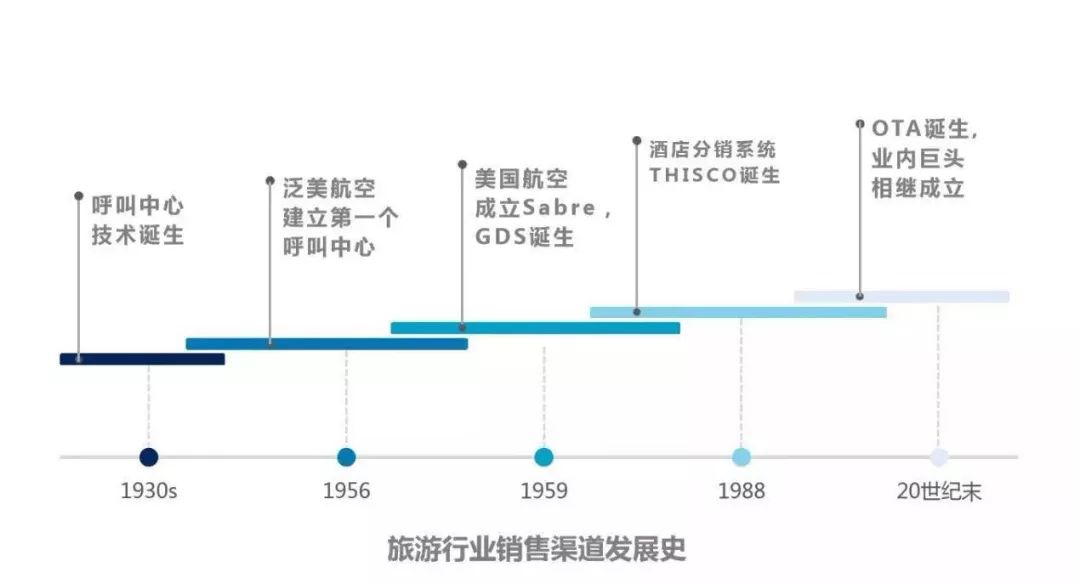
Beginning in the 1990s, with the maturity of Internet technology, the travel marketing industry is gradually becoming online, the concept of OTA (Online Travel Agency) is born, and the OTA platform will integrate the channels for booking air tickets and booking accommodation. And gradually expanded to rent cars, restaurant reservations and packaged trips and other products. At the end of the 20th century, Priceline, Expedia, and Ctrip were established one after another. The swords and swords of OTA Rivers and Lakes also officially opened.
After a long-term competitive baptism, the concentration of the OTA industry has increased, and International Booking Holdings firmly occupy the leading position, Expedia followed; Domestic BAT continues to fight: Ctrip backed by Baidu, market share advantage Obviously; Meituan and Tongcheng Yilong are under Tencent; Flying Pig belongs to Alibaba Group, and its strength has increased greatly in recent years.
Under the tide of the times, many traditional GDS companies began to get involved in the OTA field. The GDS giants launched new business in the same year, and strengthened their strength through the investment M&A layout around the online travel industry chain to resist the impact of new species.
Second, AOA giant revenue structure analysis
From the business dimension, the OTA industry has formed a profit model of agent + wholesale + advertising fee since its inception. The agent mode refers to the platform extracting a certain percentage of commission from the B-end revenue. The wholesale mode means that the OTA company sells products from the B-end at a lower price, and then sells on the platform to increase the price. Both models have their own merits, Booking Holdings is dominated by proxy mode, and Expedia relies on wholesale mode.
From the perspective of customers, civil aviation and hospitality customers contribute most of the revenue of the OTA industry. However, in recent years, with the reduction of the commission rate of mainstream airlines in Europe and the United States, each OTA relies more on revenue from accommodation providers, while relying on continuous development of other products to broaden the source of income; from a geographic perspective > After the increasingly fierce competition in the domestic market, various OTA giants have turned their attention to the world and opened up the second and third battlefields in order to achieve sustained income and profit growth.

Data source: According to the financial report and public information of listed companies
Now, whether it’s market capitalization or revenue and profit, Booking Holdings is a well-deserved hegemon. In 1998, Price Holdings, the predecessor of Booking Holdings, was founded. Founder Jay Walker registered the patent for the original NYOP reverse auction model “Name Your Own Price”.
The NYOP model gives pricing to hotels and airline tickets, which are highly time-sensitive, to the purpose of destocking, without compromising the interests of merchants in other markets. The user and influence of NYOP became the key to Priceline’s opening in the OTA.
In 2010, Priceline surpassed Expedia to become the world’s largest OTA, and the agent-based business model was more platform-oriented. A large number of overseas investment mergers and acquisitions helped Priceline Group expand its market and provide a large amount of revenue, contributing to the overtaking.
In 2005, the acquisition of Booking.com, the world’s largest accommodation booking platform, brought Priceline better technology, more quantity, wider coverage and continued innovation. In 2018, the group The name changed to Booking Holdings, Boooking.com is clearly visible in the group.
Today, Booking Holdings has grown to Market value is over$80 billion, and its business scope covers more than 40 languages and OTA giants in 220 countries and regions. Ba.
The Group currently offers 6 sub-brands: Booking.com, Priceline.com, KAYAK, Agoda, Rentalcars.com and Opentable, to provide bookings for airlines in major markets around the world. Accommodation, restaurant reservations, car rental, price comparison and other online travel services.
Data source: According to the financial report and public information of listed companies
The former industry’s first Expedia is also very active in the investment M&A market, the brand is more diverse than Booking Holdings. Expedia Group’s notable investment and mergers and acquisitions include Trivago, a popular European hotel search site for $632 million, and Orbitz Worldwide, a former public company that has made significant contributions to Expedia’s revenue and business growth. .
Data source: According to the financial report and public information of listed companies
In the Chinese OTA market, Ctrip has a market value of over $17 billion. Ctrip was established in 1999, and Yilong, which was established five months earlier, is the first batch of OTA companies in China. In the follow-up development, Ctrip has gradually surpassed eLong in all aspects, and through mergers and acquisitions of OTA companies at home and abroad. Form a business linkage.
As of the end of 2018, the Ctrip system represented by Ctrip and Qunar is approximately 64% and has an absolute competitive advantage in the OTA market.
Data source: According to the financial report and public information of listed companies
At the end of 2017, Tongcheng and Yilong announced the merger and listed on the Hong Kong Stock Exchange the following year. In 2011, eLong accepted the investment of Tencent and Expedia. In 2015, Expedia sold all its shares to Ctrip. Since then, with the support of many domestic and foreign giants, Tongyi Yilong borrowed the advantage of Dongfeng, in the WeChat applet. The dividend period has grown significantly, in recent yearsThe performance was much better than expected.
Data source: According to the financial report and public information of listed companies
For the GDS Big Three Sabre, Travelport and Amadeus, the contribution of the OTA business to revenue was also important.
Three, the distribution of the investment track and the target track
The investment M&A event in the OTA market is extremely active. In 2000, the number of OTA companies’ external investment increased. Before and after 2004, the industry entered the integration period, and a large number of investment mergers and acquisitions broke out. According to the incomplete statistics of CVSource’s investment data, from 2000 to now, 8 companies with large volume in the industry have a total of 208 cases public investment mergers and acquisitions.
Among them, only the investment M&A events in the OTA and GDS tracks reached 91 cases, an average of 5 per year; compared with the previous network car giants, the leading companies in the OTA industry centered around the core The business’s track investment tendency is more obvious – Travel, related services such as insurance, payment, social, portal, OTA platform provider car rental / network car track, hotel / homestay industry are OTA companies The focus of the object, the directly related targets of these businesses accounted for 3/4 of the total investment event.
Data Source: Organized by CVSource, Crunchbase, Public Information
Data Source: Organized by CVSource, Crunchbase, Public Information
Four, regional distribution of investment M&A targets
From the regional distribution dimension of the underlying company, the North American market is the focus of the OTA competition. The United States and Canada have contributed 2/3 of the OTA industry investment M&A targets. The United States is the world’s largest tourism market with a market size of nearly $500 billion. On the other hand, the United States is a test field for new business models, both in the GDS era and in the OTA era. A large number of small and medium-sized OTA players who have been born on the market with differentiated play have faced the fate of being acquired by the giants after the industry entered the integration period.
The number of investment targets in continental Europe is also very eye-catching. This is inextricably linked to the high per capita GDP of Europe and the profound influence of holiday culture. At the same time, the low concentration of European hotel industry is also characterized by OTA and other travel services companies. Provides ample living space.
Among the 56 targets in China, 52 companies are led by Ctrip, and overseas giants, in addition to Booking Holdings, actively deploy Didi, Meituan and Ctrip, three Chinese related track giants, others Companies either smash China or have little layout in China.
Different from the melee in the Southeast Asian market, in the OTA market in other parts of Asia, SingaporeOutstanding, 5 giants have entered the Southeast Asian market by acquiring or acquiring shares in Singapore’s local travel service companies. At the same time, Indian local OTAs such as MakeMyTrip (NASDAQ: MMYT) are also favored by various industrial capitals.

Data Source: Organized by CVSource, Crunchbase, Public Information
After 2010, airlines in Europe and Japan have been in bankruptcy. The once glorious giants are no longer in sight. The downstream OTA industry has undergone several rounds of reshuffle and has been rescheduled several times. Singing, I am on the stage. The transformation and landing of technology has promoted the change of the travel marketing industry again and again. In the past five years, the mobile Internet and sharing economy have reshaped the form of tourism, and the next revolutionary opportunities and challenges in the travel marketing industry. Where is it?
Headmap source: Unsplash
